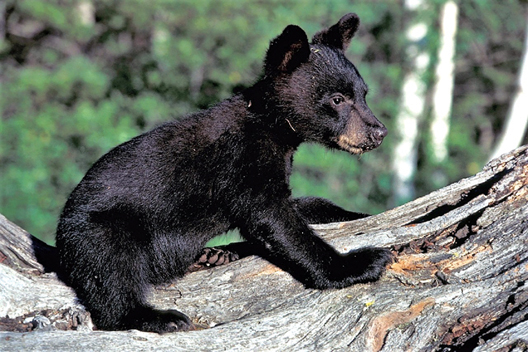Nature’s Babies: Myths and Facts
Published 6:00 am Saturday, June 15, 2019


BY DANNY BLEVINS
STAR CORRESPONDENT
It’s that time of year again when nature is renewing itself, and you can see signs of it everywhere. One of the biggest signs is the birth of animals all through the forests and fields.
Trending
Humans are also out fishing, camping and hiking and odds are we will probably encounter one of these babies.
Let’s look at some of the myths and facts about these babies to help us enjoy nature better and safer.
Fact or Myth: If you find a baby animal, it is probably homeless and you should take it home or call a game warden. Myth-this is where many people make mistakes when it comes to newborn wildlife.
We walk upon these little babies, and we think they have been abandoned. They have not. I guarantee you that their mother is not that far away waiting for you to leave.
Fact or Myth: If you touch an animal baby, its mother will smell your scent and reject it because it has the smell of a human. Myth- any of nature’s mothers will accept their offspring once you leave them alone.
Do not bother them and take only photos from nature and leave only tracks.
Trending
Fact or Myth: If you come across deer fawns leave them alone. Fact-when a fawn is born, they are born without a scent for the first few hours of life.
That is their only protection against predators until they can get their legs under them. Then, they are taught by their mother to lay still if danger approaches.
Not long ago I almost stepped on two fawns while I was walking near my house. I got to within three feet of the fawns, and they still would not move.
I backed away, and I could hear the mother come for them when I was far enough away.
Fact or Myth: If you come across a bear cub in the woods, you are in more danger than you probably realize. Fact- bear cubs are taught to run up a tree if there is a danger, and if you get too close, the female bear will be there to defend her young.
According to scientist, when there is a black bear attack, most female black bears attack to protect their young and most males attack because they see you as a threat or as food.
If you happen upon cubs, get away from them as fast as you can and keep a sharp eye peeled for the mother.
A friend of mine was hiking one day and came upon two black bear cubs. The mother black bear mock charged him and started slapping the ground with its paws.
He left the area by walking in a wide circle. The bear followed him for the next mile to make sure he was leaving.
Fact or Myth: One of the more common baby animals you may encounter are raccoon babies (or kits). They look cute, and it is okay to pick them up and play with them.
Myth- to begin with picking up that kit will anger the raccoon mother, and secondly, these babies can be a danger to your health. Raccoons carry an assortment of parasites and sometimes even rabies.
Fact or Myth: If you see a ruffed grouse or any other bird and they act like they are sick, it is okay to take their young because they will die if the mother dies.
Myth-any birds have a distinct way of saving their young; they will act like they are hurt and try to lead you away from their babies.
A few years ago, I was hiking and saw an adult ruffed grouse walking through the woods with one wing hanging by her side as if she was wounded.
I kept walking and almost stepped on a little group of baby grouse that were hidden under the forest floor leaves. The momma was trying to lead me away from her babies.
Remember, if you are out and about during this spring and summer and come across baby wildlife, leave them alone.
God knew what He was doing when he made them, and usually, they will grow up just fine without any help from us.







